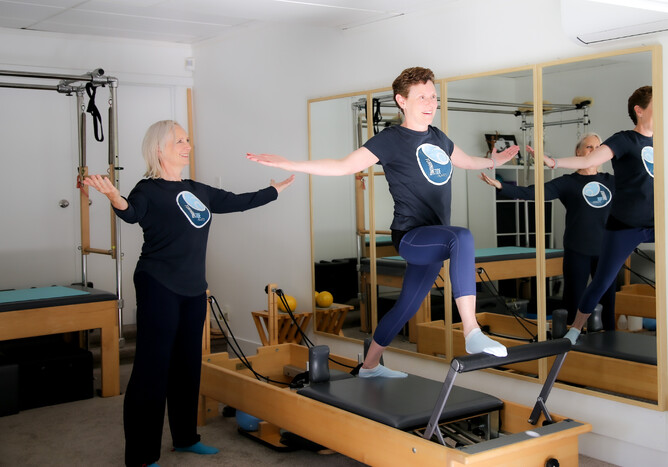What are the Pilates Principles ?
When the two Pilates teachers, Philip Friedman and Gail Eisen, decided to write the first Pilates book (excepting those written by Joe Pilates himself) they wanted a way to describe and explain how Pilates is different from other ways of exercising. What you might call ‘the Pilates difference’. Philip and Gail wanted to give their readers points of focus to increase their understanding of the thinking part (the mind of mind, body, spirit) embedded in the Pilates method and so increase the effectiveness of their Pilates practice.
The 6 or 8 principles are ?
The original 6 principals in their book “The Pilates Method of physical and mental conditioning” published in 1980 were listed:
· Concentration
· Control
· Centering
· Flowing Movement
· Precision
· Breathing
Subsequently Pilates practitioners have added 2 more to this list:
· Co-ordination
· Balance
What do the principles give us ?
Applied to Pilates, these principals fill out the detail we need to deepen, enliven, and empower our practice mentally and physically. The principles are ideas that make Pilates more than just exercise, choreography, or mindless repetition of movements.
Begin with Balance, falling forward.
I want to start with Balance, one of the newer principles. Balance is important and has a range of meanings physical and mental, we can attend to in our Pilates practice.
Balance as a purely physical attribute for staying upright, is a current talking point, as our health services have concerns about the numbers and consequences of falling over, in our aging population.
The not so simple act of balancing as we run, walk, and climb about the place, seems easy once we have mastered the basics in early childhood. However, watching a toddler learning to walk reminds us that forward motion for the upright human animal, is a kind of controlled falling. We start to lose that control again as we age.
How do we Balance ?
The cells in and around our joints that help us balance and control the body in movement, are the proprioceptor cells. These specialised cells feed information back to the brain about where we are positioned in relation to gravity, the joints’ activity and where our limbs are in space. These positional cells are damaged, aged, and can be switched off by lack of use, reduced range of movement, aging and injuries. This damage makes it harder for us to balance. We often sprain the same ankle, not necessarily because the ankle is weaker, but because the proprioceptor cells are compromised.
How can we improve our Balance ?
Pilates has many ways of challenging our balance and working full movement ranges that help the body to improve our proprioception and maintain our equilibrium. The Pilates Reformer, Wunda Chair, Trapeze Table and other equipment like the Ped O pull are designed to challenge our balance skills in various ways.
In our Pilates repertoire there are some unusual and fun points of balance. In ‘Roll like a Ball’ and ‘Seal’ we roll between two points of balance on the sitz bones and on the shoulder blades. In the ‘Russian squat’ you need to balance on a moving carriage as you squat down and up. In ‘Star’ you balance on one arm and one leg, in ‘Fish’ on one hip and ‘Headstand’ and ‘Handstand’ speak for themselves.
Other ways to Balance it out
We can also look at Balance or lack of Balance in terms of strength and mobility.
· Between the two side of the body, the left and the right.
· Between the front and back body.
· Between the upper and lower body.
How does Pilates help our Life Balance
We talk about finding Balance in our lives and as a state of mind. Pilates can help with our mental Balance, our Life Balance.
Pilates sits in the scale marked:
· Self-care
· Health
· Fitness
· Wellness
· Play
· Restoration
Pilates balances out the other life scale, marked:
· Caring for others
· Giving to others
· Working
· Providing
· Creating
· Building
What else does better balance give us ?
In every aspect of our lives, better balance increases our vitality and our performance. The physical approach to finding better Balance helps us to Balance Better other areas of our lives and our selves.


